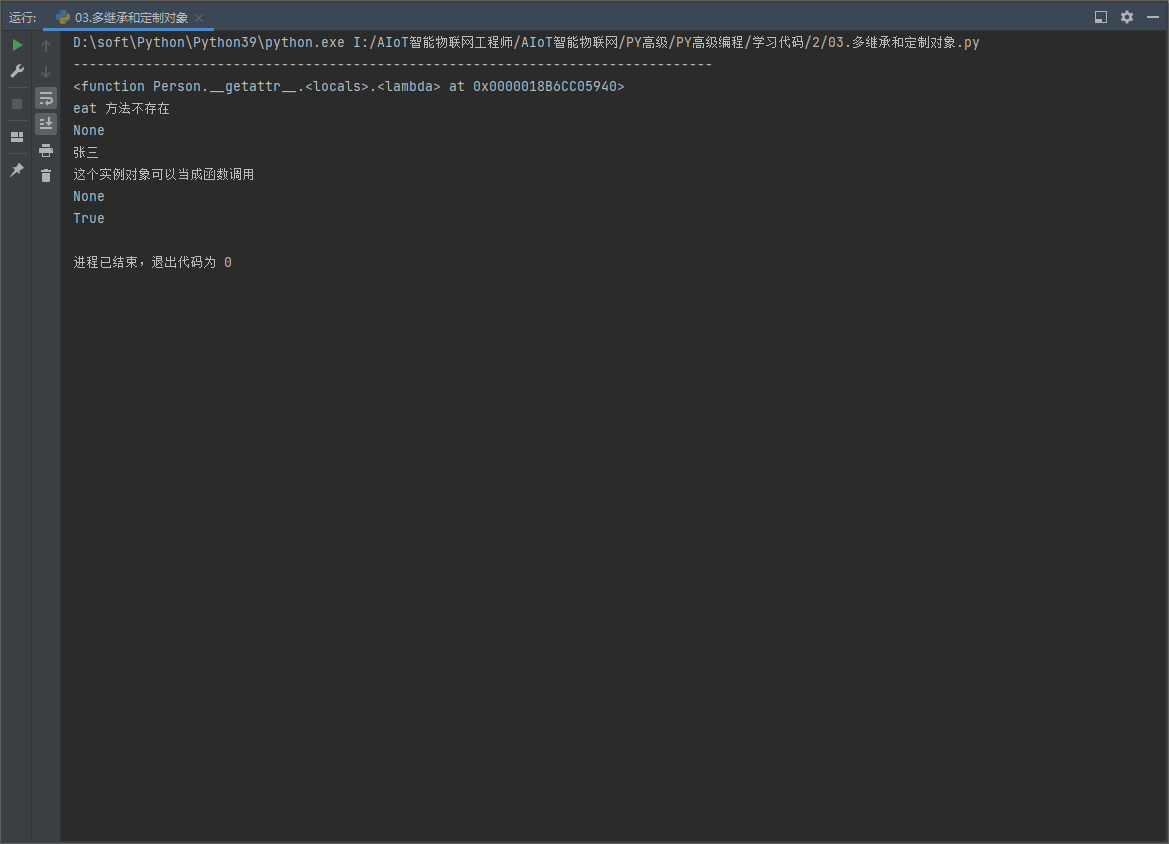面向对象进阶-多继承和定制对象
多重继承
class Father(object):
def work(self):
print('父亲在工作')
class Mather(object):
def work(self):
print('母亲在工作')
class Child(Father, Mather): # 多继承 | 在多继承中, 调用Child的work究竟是继承父类哪一个呢
def __init__(self, name):
self._name = name
if __name__ == '__main__':
c = Child('小明')
c.work() # 这里取靠类名最近的 Father | 继承优先级 | 如果自己本身没有这方法
# 打印类的父类结构 继承结构 并按照优先级别排序
# (<class '__main__.Child'>, <class '__main__.Father'>, <class '__main__.Mather'>, <class 'object'>)
print(Child.__mro__)
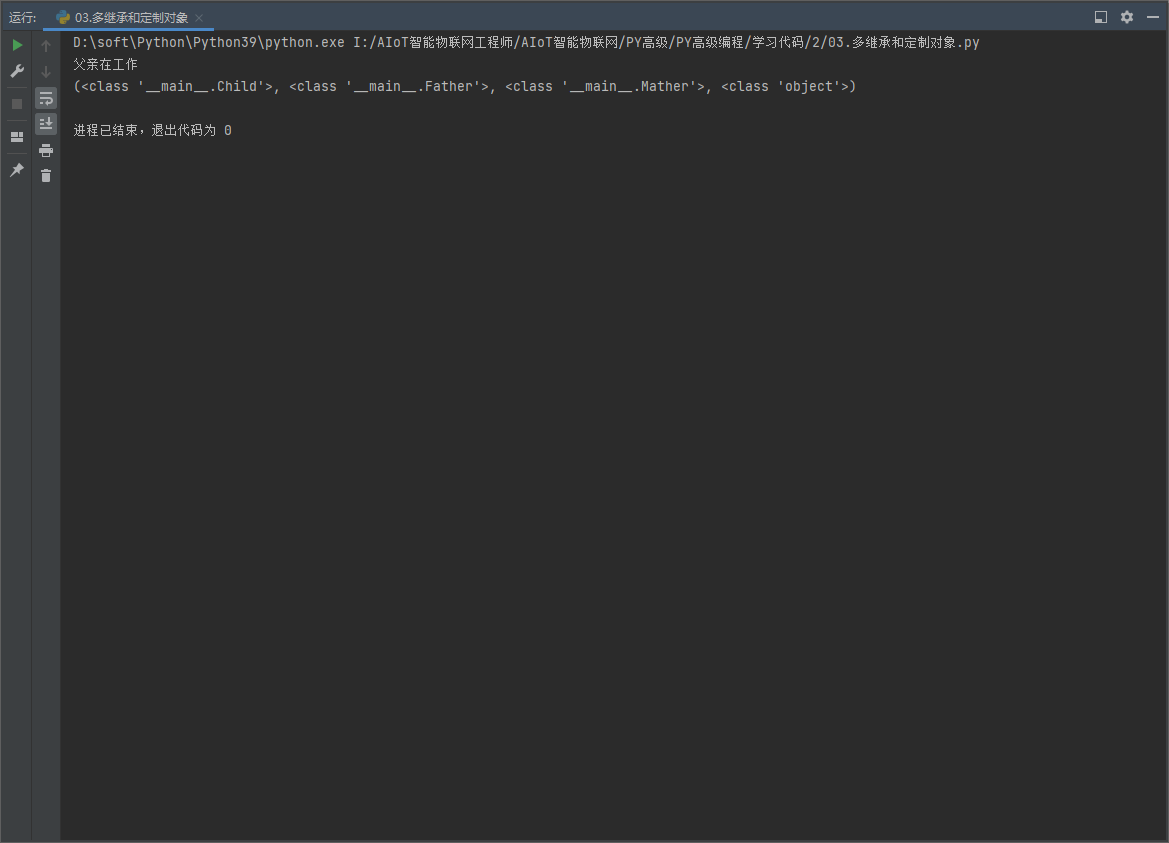
定制类 (魔术方法)
头尾是双下划线的属性或方法, 在Python中是有特殊用途
str 打印这个对象的描述
# 返回这个实例对象的描述
def __str__(self):
print(super(Person, self).__str__()) # 父类的结果
print('-' * 80)
return ', '.join([ # 该方法只能返回字符串
self.__class__.__module__, # 返回这个类(对象)的模块
self.__class__.__name__, # 返回这个类(对象)的名字
self._name, # 这个实例对象的_name属性
hex(id(self.__class__)), # 这个类(对象)的内存地址 hex: 10进制转16进制字符串
hex(id(self)) # 这个实例对象的内存地址
])
p = Person('张三')
# 重定义后返回 Person 张三
print(p) # <__main__.Person object at 0x0000024E14668F70> | 打印这个对象的描述 调用了 __str__ 方法
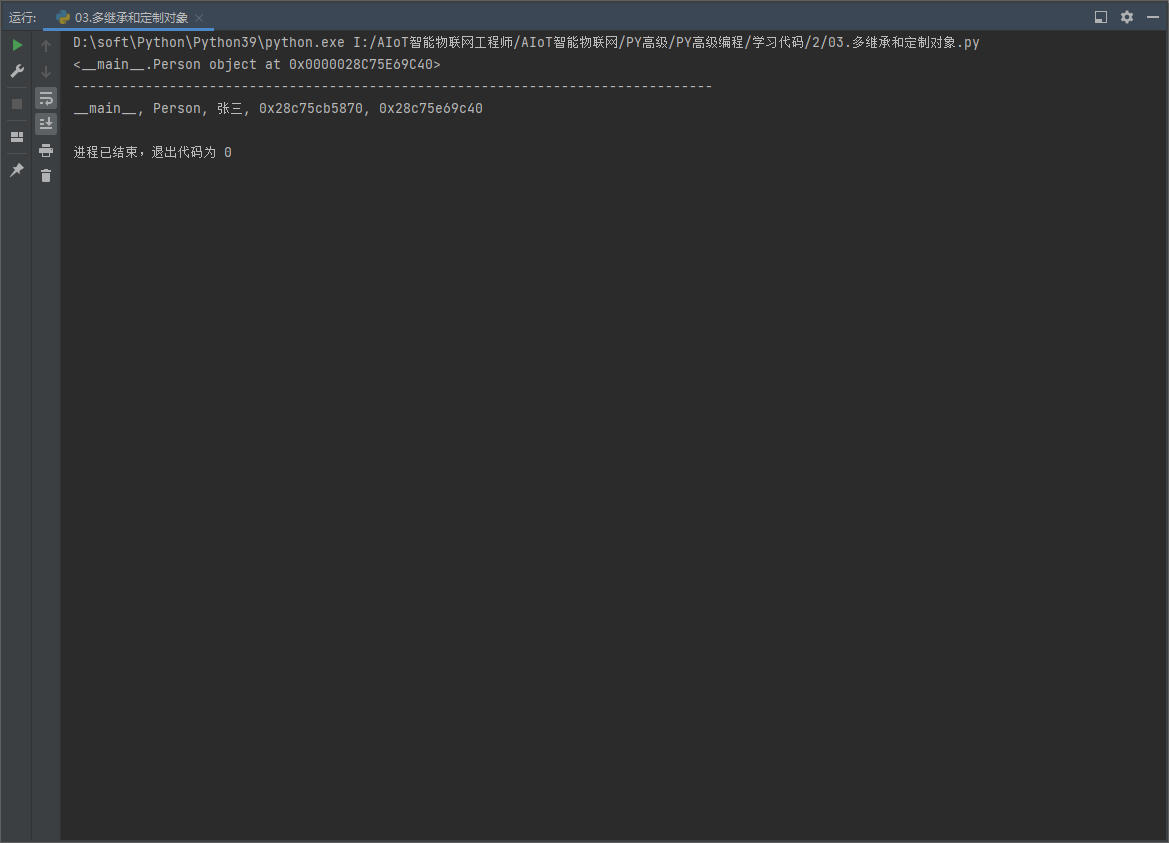
iter 与 next 定义可迭代对象与迭代器对象
from collections.abc import Iterable
from collections.abc import Iterator
# 斐波拉契数列
class Fib:
a = 0 # 定义初始值a
b = 1 # 定义初始值b
i = 0 # 定义初始值i
maxSize = 20 # 定义初始值maxSize
# 定义实例对象如何进行转为可迭代对象 __iter__ 必须返回迭代对象 可以for
# 默认Person不是可迭代对象
def __iter__(self):
return self
# 定义实例对象如何进行转为迭代器对象 __next__
def __next__(self):
self.i += 1
self.a, self.b = self.b, self.a + self.b
# 需要做个判断 否则会死循环 这里没办法中断循环 就只能抛异常
if self.i > self.maxSize:
raise StopIteration
return self.a
f = Fib()
print(isinstance(f, Iterable)) # 可迭代对象
print(isinstance(f, Iterator)) # 迭代器对象
for k, _ in enumerate(f):
print(str(k).zfill(3), _)
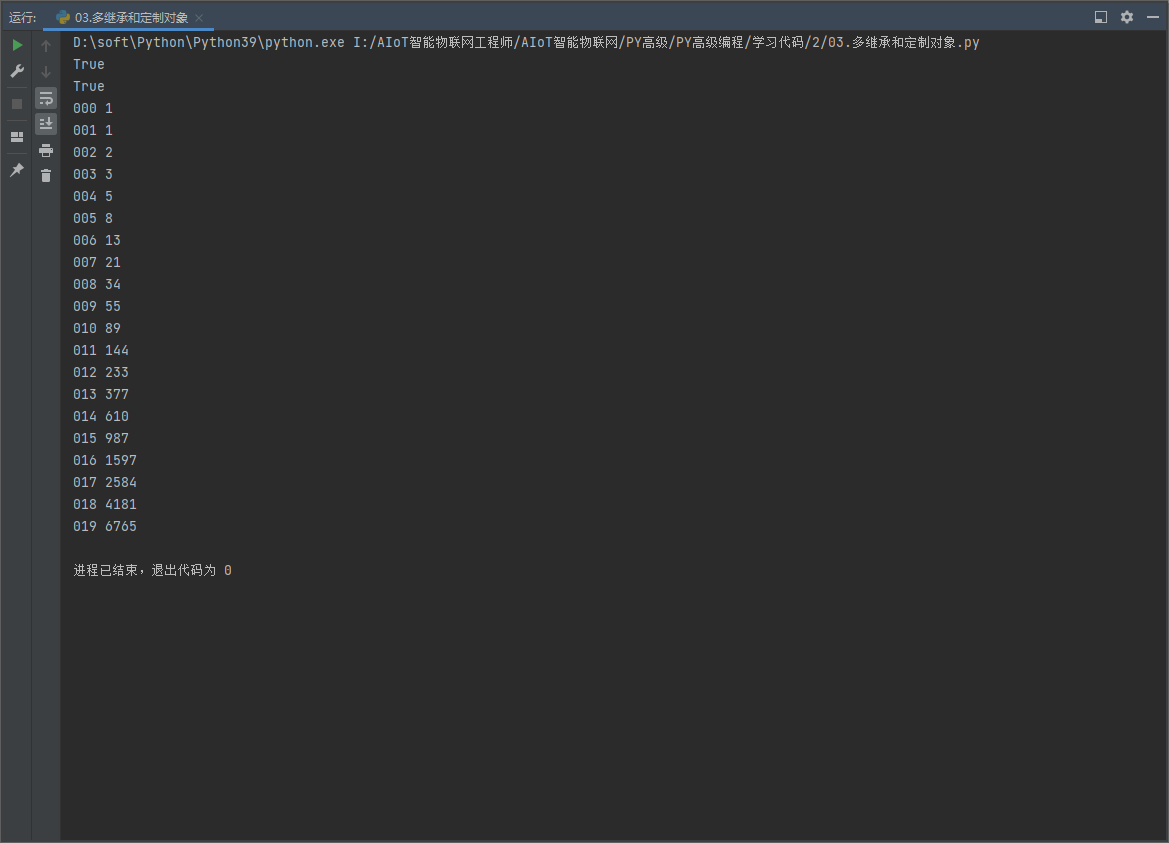
getitem 使迭代对象更像list 可以下标访问、切片
# 定义实例对象可以使用下标形式获取
# 只是感觉有点重复
def __getitem__(self, item): # item可能是下标 也可能切片
a, b, c, i = 1, 1, [], 0
start, stop, step = 0, self.maxSize, 1
if isinstance(item, int):
start, stop, step = 0, item, 1
elif isinstance(item, slice): # 切片、范围 (初始, 结束, 步长) | slice(start, stop[, step])
start, stop, step = item.start, item.stop, item.step
if start is None:
start = 0
if stop is None:
start = self.maxSize
if step is None:
step = 1
# print(start, stop, step)
for _ in range(stop):
if _ >= start:
# print(i)
if i % step == 0:
c.append(a)
i += 1
a, b = b, a + b
if isinstance(item, int):
return a
elif isinstance(item, slice):
return c
print('-' * 80)
# Fib 有点像列表 但还是不能当列表
# 当设置 __getitem__ 后就不报错了 而且获取的值与上面的也对应 可以下标访问 但切片呢??
print(f[5]) # TypeError: 'Fib' object is not subscriptable
print(f[5:10:2]) # TypeError: 'slice' object cannot be interpreted as an integer
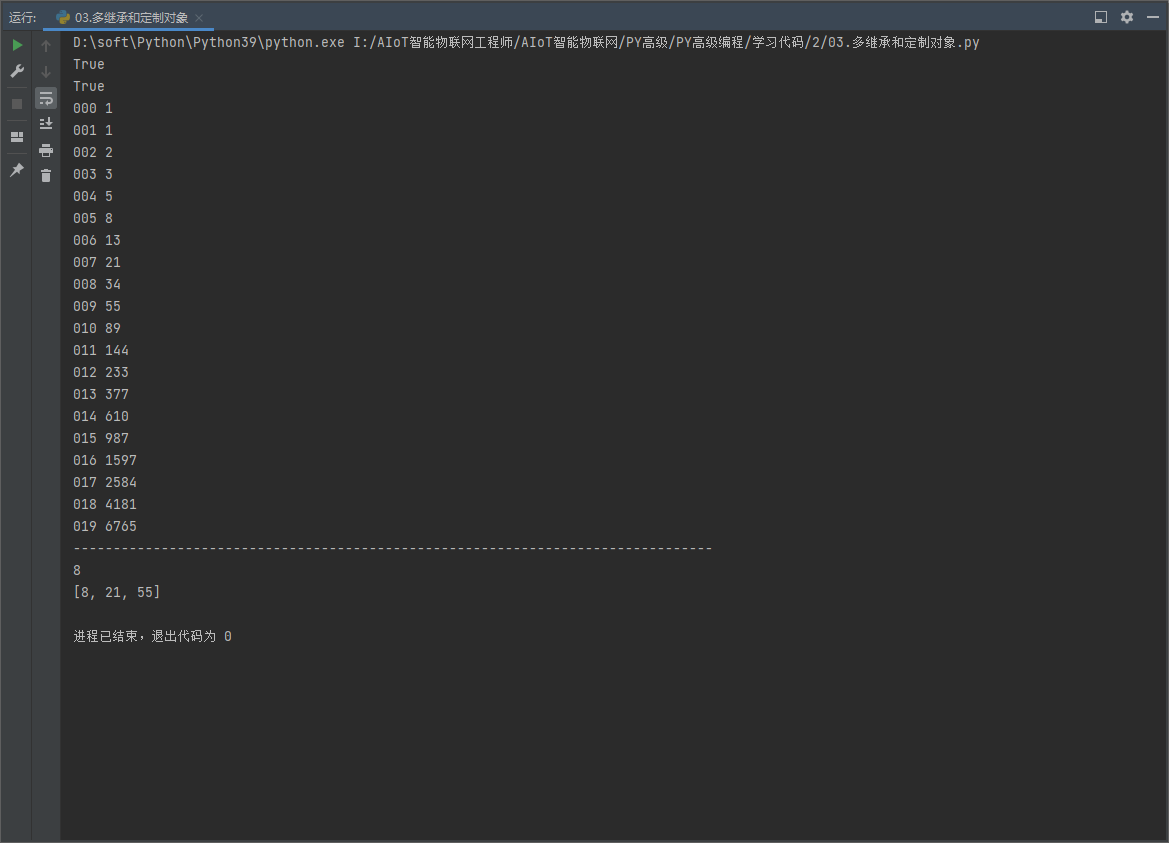
当访问一个不存在的属性或方法 会报错 该如何防止错误?? getattr
# 重写这个方法可以时调用不存在的属性或方法不报错 (方法还是会报错)
# TypeError: 'NoneType' object is not callable
def __getattr__(self, item): # 可能是属性名字 可能是方法名字
prop = '_' + item
if prop in self.__dict__:
return self.__dict__.get(prop)
# 不存在只能当函数调用 防止 TypeError: 'NoneType' object is not callable
# 没有方法列表
return lambda: print('%s 方法不存在' % item)

把实例对象当成函数调用 call
# 把实例对象当成函数调用 __call__
def __call__(self, *args, **kwargs):
print('这个实例对象可以当成函数调用')
pass
# 加上 def __call__(self, *args, **kwargs): 就可以了
# 对象和函数并非那么清晰
print(p()) # TypeError: 'Person' object is not callable
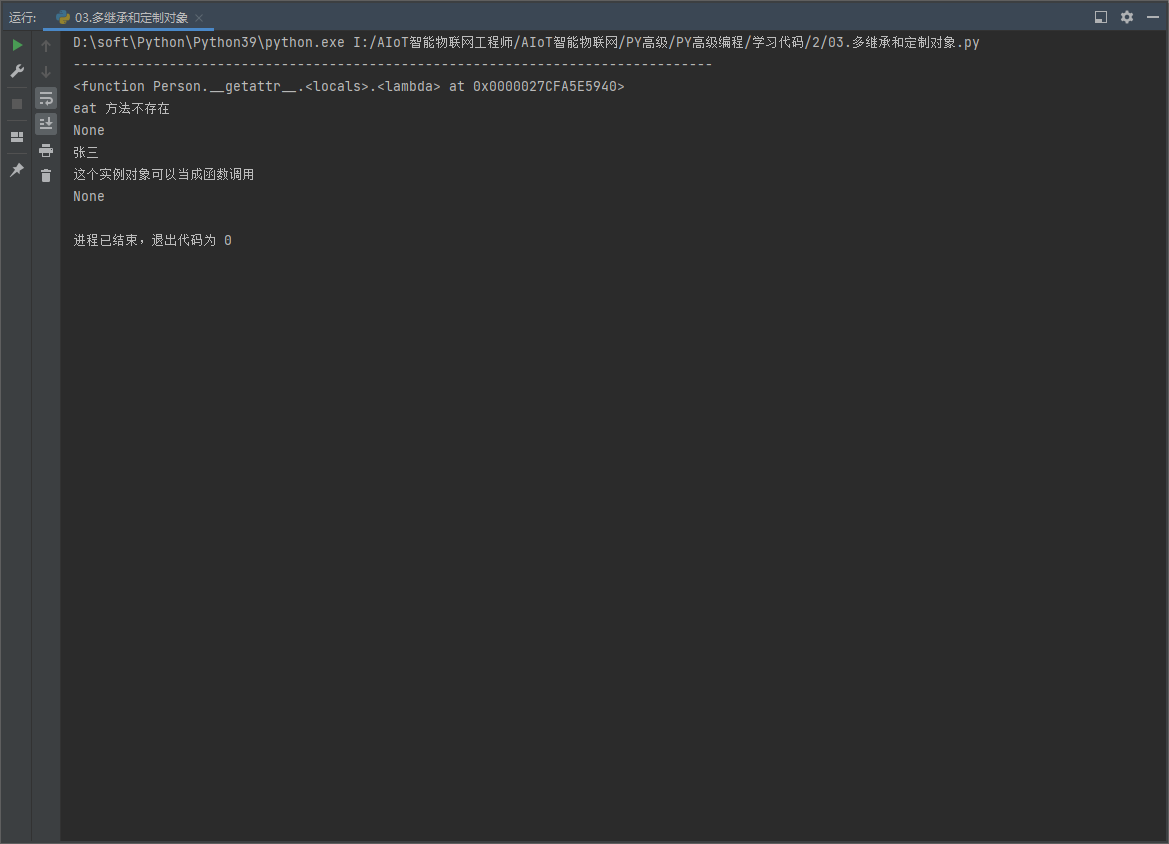
判断一个变量是对象还是函数 | 是否可以调用
print(callable(p))
